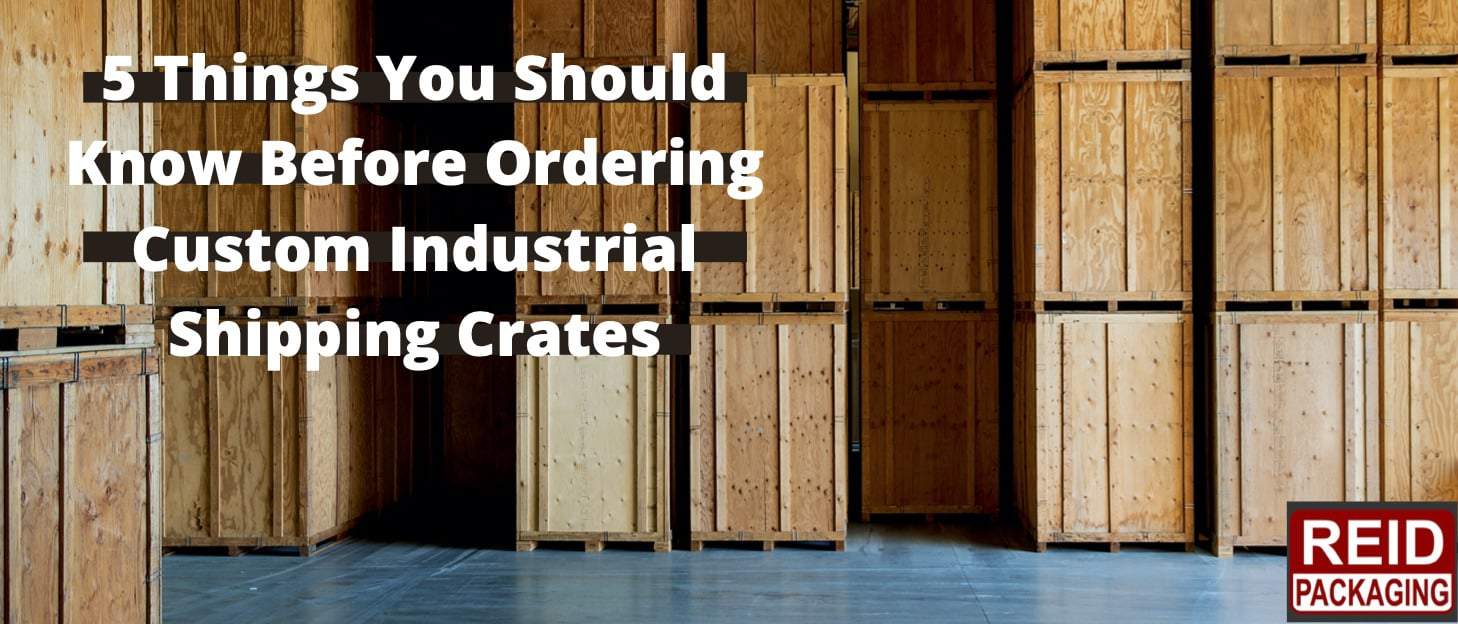5 Things You Should Know Before Ordering Custom Industrial Shipping Crates
We’re in the business of making custom industrial shipping crates for manufacturers around the nation and the globe who require transport packaging for their products. Located in North Atlanta, we’re close to one of the biggest shipping hubs in North America, so we’re often involved when large, complex industrial products need to move long distances. Being on the receiving end of requests for quotes for shipping crates, we often help people determine the best kind of shipping crate for the job.
Below, you’ll find some general points to consider before ordering a custom shipping crate. Be sure to check out our checklist of questions to ask yourself before designing a custom shipping crate, as well.
1 – Sea containers are not the only option.
Often when a product needs to be shipped a great distance, people immediately imagine its journey happening in a sea container. These corrugated steel boxes have come to dominate our imagination of shipping.
But sea containers are not the only option. Many domestic shipments are more economical if the company does not us a standard sea container. LTL (Less than truckload) shipping can be a useful way to save on costs. This requires building only a sturdy wooden shipping crate that will protect the item as it gets shipped with other, similar items.
2 – Wooden crates provide a high level of security and protection
For the vast majority of items, a wooden shipping crate is the best option. A combination of dimensional lumber and plywood provides the security and protection required of most industrial shipping crates. We’ve made wooden crates for items that weigh anywhere from 50 to 5,000lbs, and are one foot long, or 50-feet long. Wood has the versatility in custom applications to serve the vast majority of shipping needs.
3 – Wooden crates are not always necessary – combinations of corrugated and wood bases can be very useful.
Although wood is used for most shipping crates, in certain circumstances, other materials should be discussed as well. Hybrid crates that utilize corrugated and wood can be a helpful way to reduce costs without compromising protection. For certain items with specific shipment journeys, we can create a sturdy wooden base with corrugated fiberboard as the sides and top. These hybrid crates keep the total weight down (which is very economical in air freight), and they can keep material costs down as well. Many of our customers are surprised to learn that corrugated fiberboard (commonly known as cardboard) can be used in certain shipping crates without sacrificing protection.
4 – Know your product’s journey so you can best protect against elements.
If you don’t know how the product will be shipped, then it hard to effectively protect it for its journey. Intermodal transportation can result in unexpected packaging problems as items are transferred between different containers, vessels and even climates. For these reasons, it is always best to determine as precisely as possible how an item will be shipped before you begin to design and plan the custom shipping crate. Additionally, whenever a wooden crate is crossing international borders, we need to observe ISPM-15 export crating rules and regulations. Otherwise, your item might be turned around at port, resulting in extra costs and delays.
We can’t emphasize enough that climate is an important element in shipping crate design. A product that goes through a hot, humid (and sometimes salty) journey needs to have proper moisture protection or it will arrive in a different state than it left in. See our article on container rain to better understand this issue.
5 – Reusable crates are often worth the investment.
Anytime an item will be exposed to more than one journey, it is worthwhile to consider creating re-usable packaging. Although re-usable crates come at a higher cost, they generally pay for themselves if the crate is used only twice! Re-usable crate options are most common with trade show exhibits, but we’ve had success building re-usable crates for a variety of products and shipping needs. Let us know if you think a reusable crate would be best for your specific situation.
As always, get in touch with Reid Packaging to discuss designing and building the perfect custom industrial shipping crates for your needs. We’re standing by.

